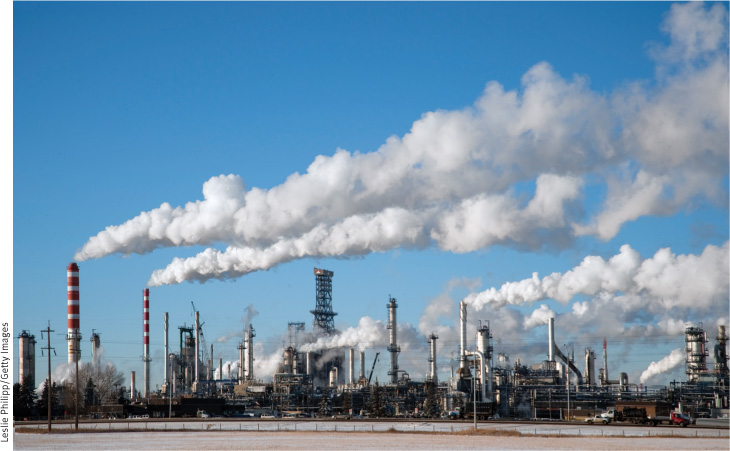Externalities
16
What externalities are and why they can lead to inefficiency and government intervention in the market
The difference among negative, positive, and network externalities
The importance of the Coase theorem, which explains how private individuals can sometimes remedy externalities
Why some government policies to deal with externalities, like emissions taxes, tradable emissions permits, or Pigouvian subsidies, are efficient and others, like environmental standards, are not
What makes network externalities an important feature of high-
tech industries
WHO’LL STOP THE RAIN?

FOR MANY PEOPLE IN EASTERN Canada, there is no better way to relax than to fish in one of the region’s thousands of lakes. But in the 1960s, avid fishers noticed something alarming: lakes that had formerly teemed with fish were now almost empty. What had happened?
The answer was acid rain, caused mainly by coal-
You’ll be glad to hear that the acid rain problem today is much less serious than it was in the 1960s. Power plants have reduced their emissions by switching to low-
When individuals impose costs on or provide benefits for others, but don’t have an economic incentive to take those costs or benefits into account, economists say that externalities are generated. You may recall that we briefly noted this phenomenon in Chapters 1 and 4. There we stated that one of the principal sources of market failure is actions that create side effects that are not properly taken into account—
Externalities arise from the side effects of actions. First, we’ll study the case of pollution, which generates a negative externality—a side effect that imposes costs on others. Whenever a side effect can be directly observed and quantified, it can be regulated: by imposing direct controls on it, by taxing it, or by subsidizing it. As we will see, government intervention in this case should be aimed directly at moving the market to the right quantity of the side effect.
Other activities generate positive externalities, a side effect that generates benefits for others—
In the case of both positive and negative externalities, achieving the best solution takes place at the margin, setting the benefit of doing a little bit more of something equal to the cost of doing that little bit more.
Lastly, we’ll return to the case of network externalities, a phenomenon we learned about in Chapter 13 that’s particularly common in high-